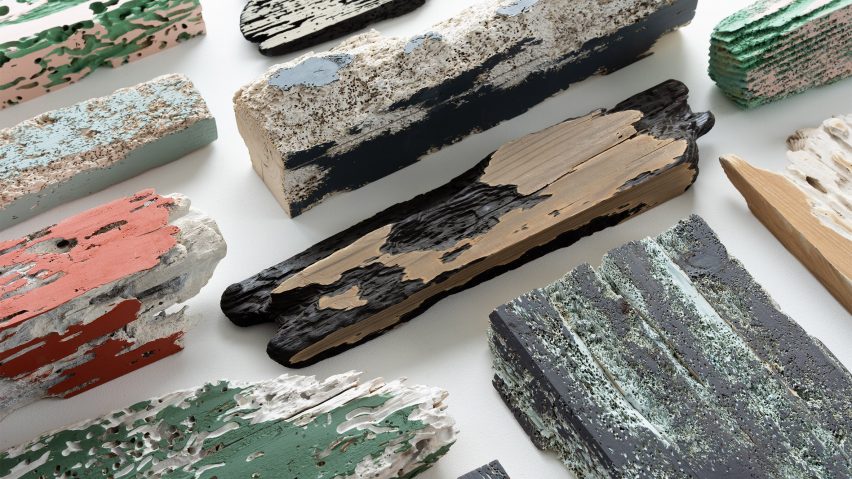
Seven Japanese designers working with neglected materials at Designart Tokyo
Furniture crafted from driftwood, "dresses" made from thousands of wood pieces and lamps 3D printed from tatami-resin were some of the highlights of Designart Tokyo.
Taking place across the Japanese capital, the seventh edition of Designart Tokyo featured more than 100 exhibitions showcasing furniture, lighting and objects as well as art, interior design and fashion.
It was the first "normal" Designart Tokyo event since pandemic travel restrictions were fully lifted in Japan.
"We're emerging from a long tunnel," said Designart co-founder Akio Aoki of Miru Design. But, while there was more scope for international participation, the event seemed to focus principally on regional creators, mostly attracting a local audience of trade and public.
Dotted around key areas of the city and without the PR machine of a main trade fair, Designart Tokyo faces the challenge of trying to create visibility in an enormous city – working without government funding.
"It's a 'bring your own' event," Designart co-founder Mark Dytham of Klein Dytham Architecture told Dezeen.
A New Horizon exhibition was curated by Suzy Annetta, and aimed at cultural exchange in the region. Annetta, editor-in-chief of the Asia-Pacific-focused design magazine Design Anthology, brought together a themed selection of furniture and products from not only Japan but neighbouring countries including China, Hong Kong, South Korea and Taiwan.
Exhibition spaces were made available by various venue owners, including a lot of existing furniture showrooms and fashion stores, while the larger collective shows seemed largely reliant on corporate sponsorship.
Other venues, from shopping malls and department stores to galleries and railway arches were used to display works from a variety of young Japanese design talents, with Designart Tokyo supporting five designers under 30 to showcase their ideas.
Throughout these venues, there were a number of Japanese designers working with discarded or neglected materials and processes. Read on for works by seven of them:
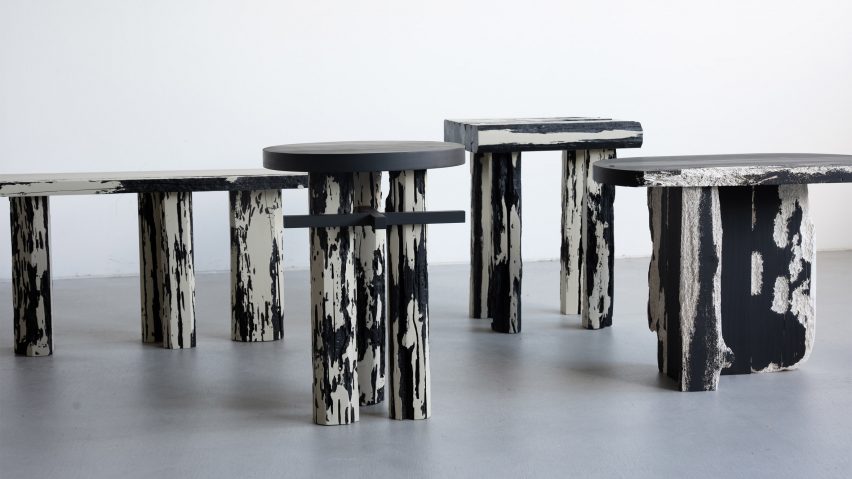
Nature or Nurture by Daiki Tado
Visiting the coastlines of Japan, designer Daiki Tado became intrigued by driftwood washed up along the shore and its varying degrees of decay. Not only tumbled by the waves but also eaten by insects and bleached to a pale colour with time, the wood grain of the forest gives way to new characteristics and textures from the ocean.
At Tokyo Midtown, Tado presented a variety of colourful stools and benches constructed from pieces of found driftwood. He also showed sample pieces to explain his process, whereby he applied one colour to the wood before cutting away sections and applying a second colour, making the finished material less recognisable as driftwood.
Tado is a member of experimental design collective Multistandard.
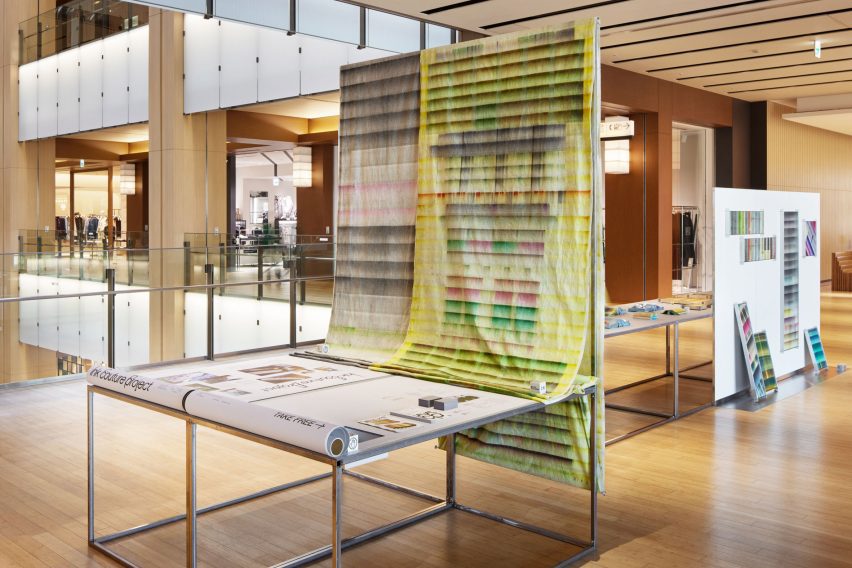
Ink couture project by 21B Studio
At Tokyo Midtown, the trio of designers behind 21B Studio – Daijiro Arimura, Shotaro Tokioka and Kobayashi Yuya – presented one-off books and artworks made from textile waste from the print industry.
When the designers visited a printing press, they were attracted to the colourful fabrics piled up in a waste basket. These non-woven fabrics were previously used to clean the colour plates on the printing presses, soaking up the excess ink between jobs. The designers were drawn towards the "accidental" beauty of the patterns found on the discarded cloth.
They edited select cuttings from the discarded textiles and exhibited them as artworks and books. Their intention is to explore transposing some of the patterns to production textiles in the future.
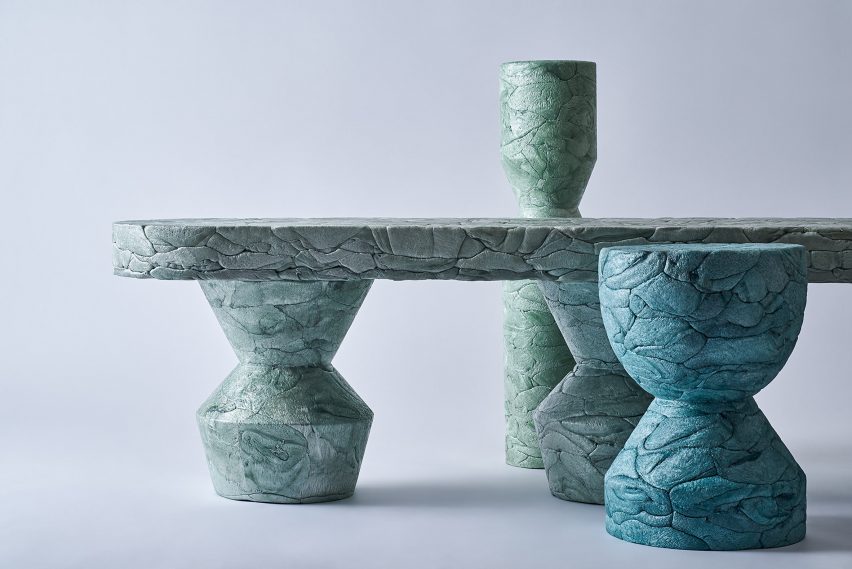
Refoam by We+
Japanese design studio We+ presented furniture made entirely from waste polystyrene foam collected from fish markets and supermarkets in Tokyo.
Displayed as part of the upcycled objects at the A New Horizon exhibition, the studio presented a totem-shaped console and stools made entirely from the foam.
The process involves the designers constructing the furniture within the recycling facility, tightly packing blobs of the melted polystyrene directly into metal molds while it's still warm and malleable.
We+ is interested in intercepting the material's complicated recycling process, usually involving multiple processes in different countries, while adding value to single-use polystyrene.
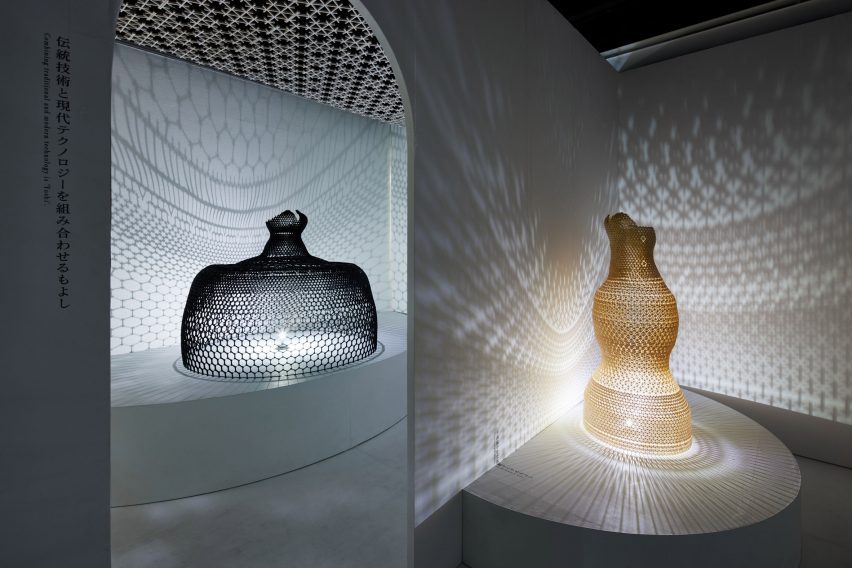
Michi Kumiko by Mai Suzki
Young designer Mai Suzki presented a collection of sculptures to mimic the silhouette of dresses as well as spherical lamps in an evocative installation at the Jida Design Museum in the Axis building.
The sculptures were hand-crafted using the ancient Japanese woodworking technique of kumiko, made by assembling small wooden pieces without the use of nails or glue.
Suzki encountered the technique during her second year of university and tracked down the only craftsman in Japan able to make a perfectly spherical Kumiko. She studied the unique technique until she became the second person able to do it.
She then modeled all of the parts of the spherical Kumiko in 3D and calculated the design of the parts using a database that she developed herself. Using this database she has developed new expressive forms, such as dresses, made from a combination of wooden and 3D printed pieces. Combining traditional craftsmanship and today's technology, she has revived the dwindling skill of kumiko.
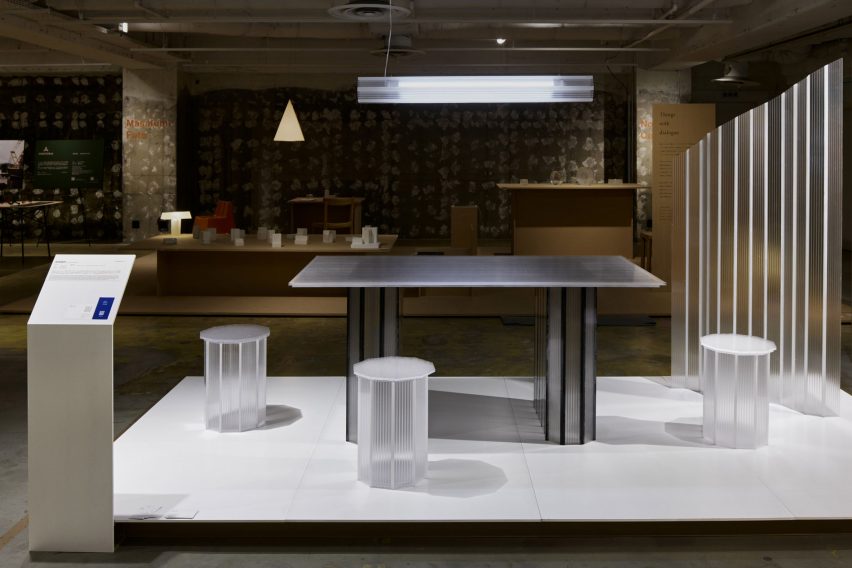
Border by Rikiya Toyoshima and Taki Shomu
Showing in an empty space within the Seibu Shibuya department story, two designers from the PHAT design collective, Rikiya Toyoshima and Taki Shomu, presented furniture made from surplus hollow polycarbonate.
The transparent, lightweight yet strong material is normally used as an alternative to glass in doors and windows. But as each fixture is custom-made, there are many offcuts of uneven sizes discarded from production.
The designers processed this excess material into thin boards of uniform width which were used in the creation of stools, screens, lights and tables. The pieces were held together by caulking material used for gluing glass in interior construction.
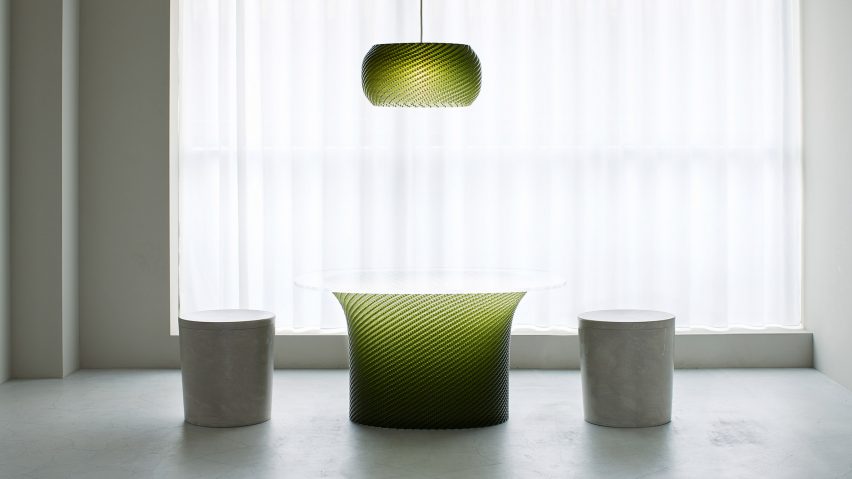
Sori and Mukari by Ryo Suzuki
This pendant lamp and table were constructed from a material made of discarded tatami mats which were powdered and mixed with biodegradable resin. The tatami-resin was then 3D printed and creates a "knitted" and semi-transparent structure that changes its expression depending on the angle from which it is viewed.
These designs, created by Ryo Suzuki, were complemented by other interior items developed by Honoka, a group of product designers. Their Tatami ReFab Project aims to give new meaning to the traditional tatami material as it loses appeal in modern Japan.
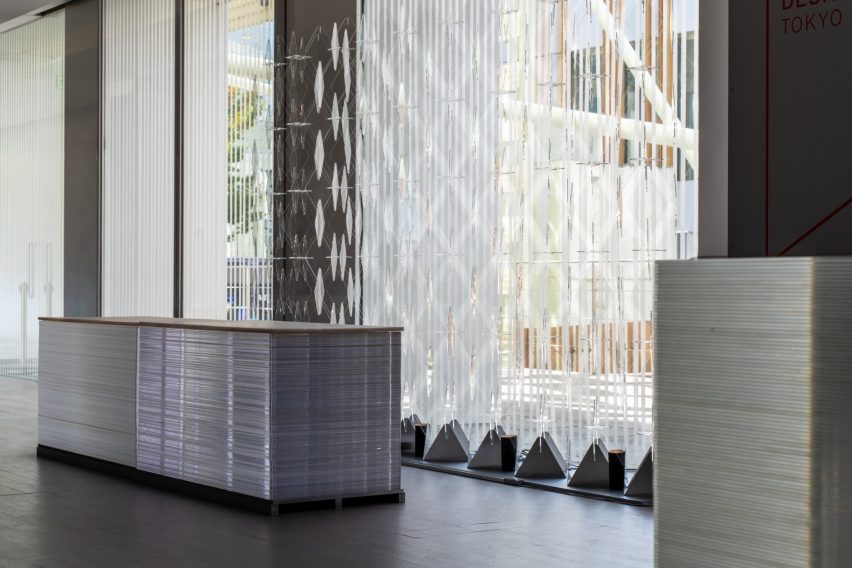
Overdust by Atsushi Shindo
The exhibition design for the group exhibition showcased at the Designart Gallery was composed by Atsushi Shindo. As well as the featured furniture, lighting and accessories in the exhibition, attention turned to the display plinths as well as spatial partitions which were made from reclaimed acrylic panels.
A mass-consumed relic of the Covid-19 pandemic, multiple acrylic panels were stacked together to create monolithic transparent plinths.
On the top layer of each plinth was an opaque sheet material made from heat-pressing chipped up pieces of the acrylic, a process developed by Shindo. In addition, he developed latticed space partitions from the discarded acrylic sheets.
In total, the exhibition used ten tonnes of reclaimed panels, only a tiny percentage of the huge stockpiles of discarded acrylic being stored in warehouses following the pandemic.
Dezeen is a media partner of Designart Tokyo, which took place at various locations across Tokyo from 20 to 29 October. See Dezeen Events Guide for an up-to-date list of architecture and design events taking place around the world.